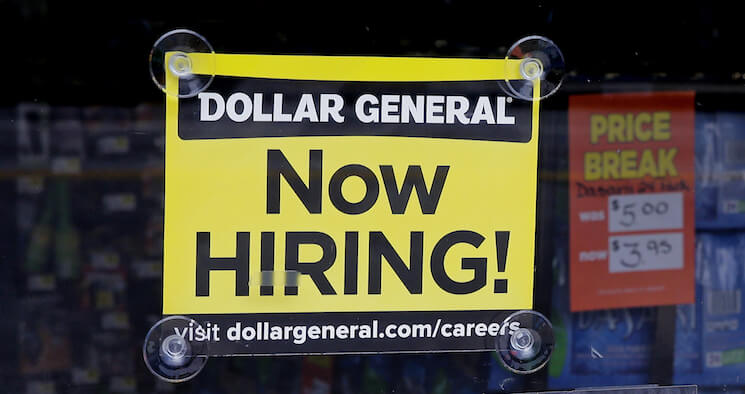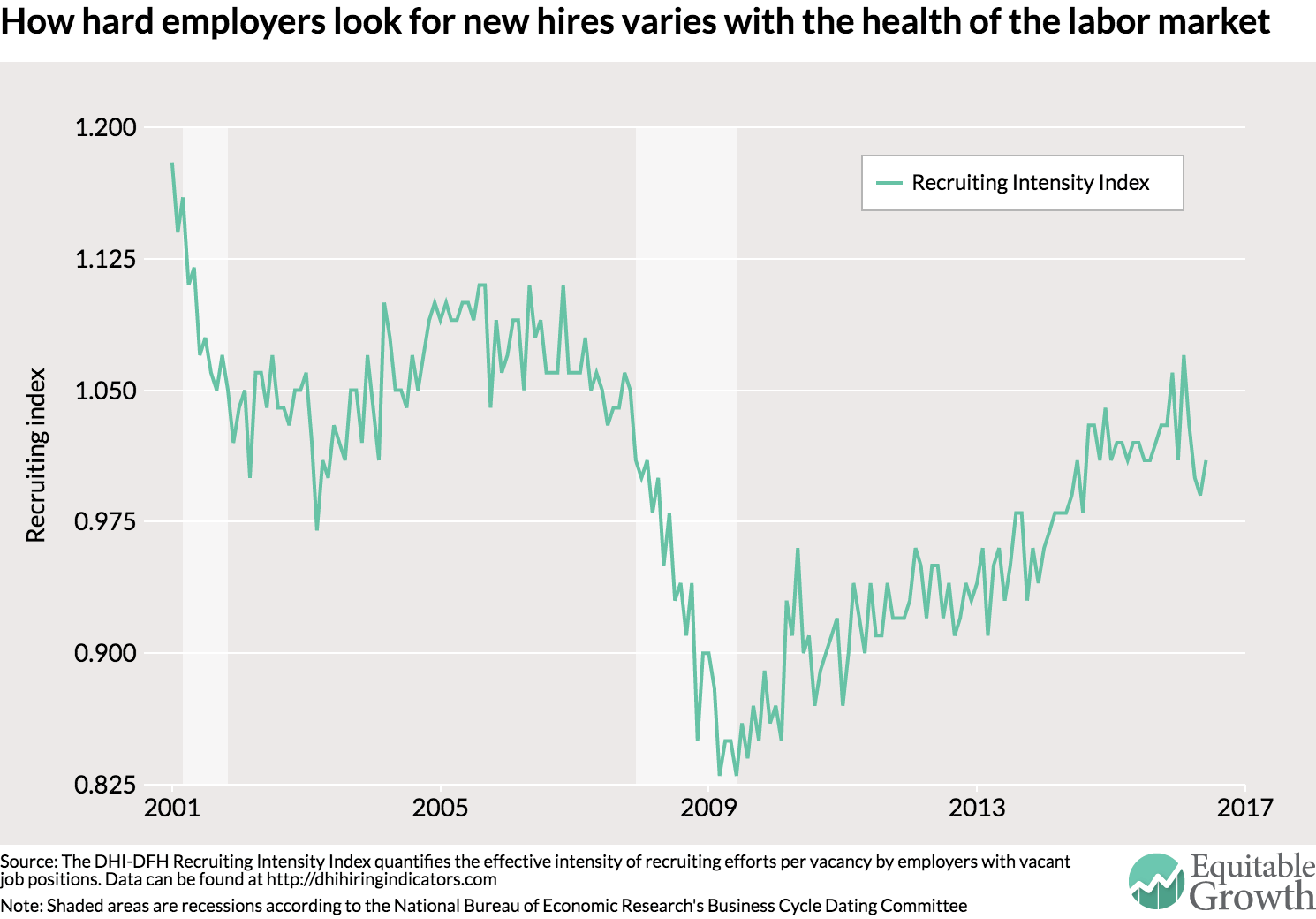How intensely are U.S. employers looking for workers?

When someone somewhere in the United States gets a new job, friends and family will congratulate them on finishing a job search. But the hunt to get new employees matched to open jobs doesn’t just happen on the worker side. As anyone who’s tried to fill open positions knows, employers don’t just sit around waiting for workers’ resumes to show up in their inboxes. Employers for the most part actively try to recruit potential employees. But what determines how hard employers search?
Research indicates that the overall health of the U.S. labor market plays a major role in determining how hard employers recruit for open positions. The role of recruiting in hiring is immediately relevant to the seeming disconnect today between the number of job openings and number of hires in the U.S. economy. Every month with the release of new Job Openings and Labor Turnover Survey data, concerns about a skills-mismatch get aired because job openings (a signal of desire to hire) continues to outpace actual hiring. This mismatch, however, assumes that all job openings are necessarily a sign that an employer wants to hire and fill that position right away. Employer’s recruitment efforts, as Ben Casselman point outs, matter as well.
Research into job search and hiring that looks at the process from the point of view of employers—the side less studied by economists—emphasizes the importance of recruitment intensity, or how much employers are doing to fill that position right now. Intensity can be measured by looking at how much firms are spending on help-wanted ads, how quickly employers look through applications, and the level of pay and benefits employers are offering. The index displayed below was developed by economists Steven J. Davis of the University of Chicago, Jason Faberman of the Federal Reserve Bank of Chicago, and John Haltiwanger of the University of Maryland. (See Figure 1.)
Figure 1

A quick look at graph suggests that recruitment intensity might have something to do with the overall health of the labor market. Intensity drops during recessions and starts to move upward as the economy heals. Research backs up this intuition. A recent paper by economists Alessandro Gavazza of the London School of Economics, and Simon Mongey and Giovanni L. Violante of New York University builds a model to understand fluctuations in recruiting intensity.
The results from the model show that the biggest factor is that employers reduce their recruitment efforts when the labor market gets weaker, measured specifically by the ratio of unemployed workers to open jobs. Think of it this way: If there are a lot more unemployed workers per job than companies are trying to fill then firms don’t have to work that hard to find good talent. But as the labor market improves, employers have to work harder to fill positions.
This increasing desire to recruit workers amid improving economic conditions also leads to companies poaching workers from other firms. Hiring workers from other firms is how the job ladder works, as workers move from one firm to another and see their wages increase as companies seek the best talent available. It’s another way to think about how a tight labor market and why periods of full employment can boost wage growth for workers. Making employers put a little bit more effort into finding workers might not be a bad thing.
